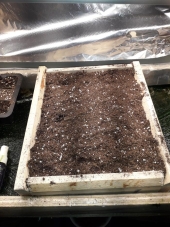I've been looking thru the threads, and perhaps someone here has an answer for me regards limewash over conventionl, fresh gypsum plaster skim
I have a 300 year old stone cottage, with various layers of post 1950 conventional cement external pointing and interior paint. As long as there's ambient heat the building is fine, if not it gets mouldy quickly.
Anyhow for better or worse, I just gave in to government scheme to have the house interanlly insulated. They have used rock wool in a kind of woodchip/polystyrene stud frame, followed by plaster board and they are now doing a gypsum skim coat.
Bill Bradbury wrote this some yrs ago on permies
https://permies.com/t/43317/Bathroom-Remodel-Retrofitting-Natural-Materials
"Gypsum is a great plaster that often gets overlooked, because that is what drywall is made from. It is still a great natural mineral plaster. I like to then apply a lime wash"
I'm aware the fresh plaster needs to dry to a pale finish and then have at least one coat of watered down paint, before a finish coat. My question is: can I use a limewash onto the fresh gypsum skim (over conventional plasterboard)?
Would I need to let the plaster dry completely first, as is the conventional route, or because I'm using limewash is slightly damp better?
And following the limewash, can I then use conventional paint (a pity I know, just loads of pots of it here when we moved in), or better to just keep up the limewash layers in the way we would do with a lime plaster wall?
Really hope someone can offer insight before the gypsum coat dries!
Best wishes from Wet and Windy West Wales, UK
Jasmine








